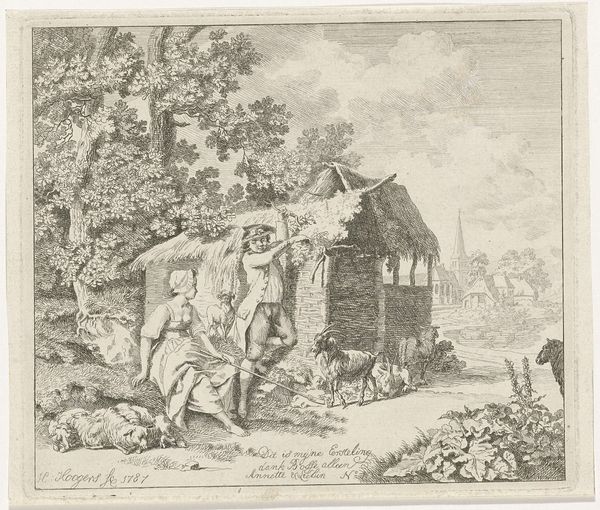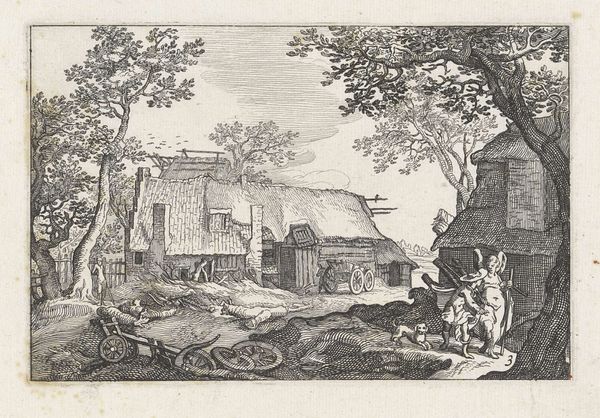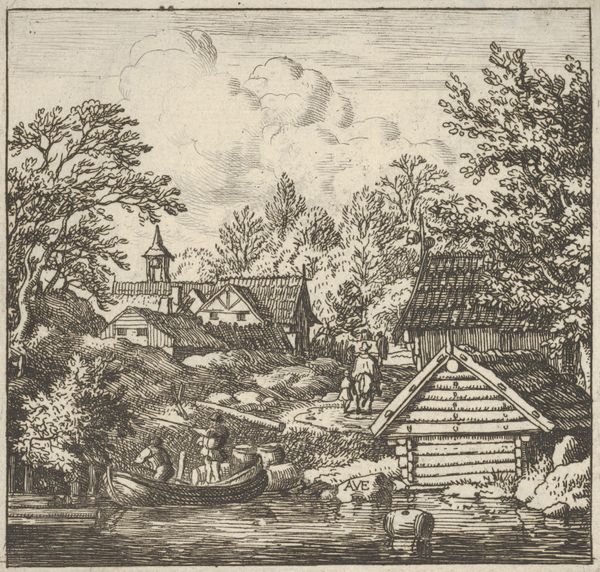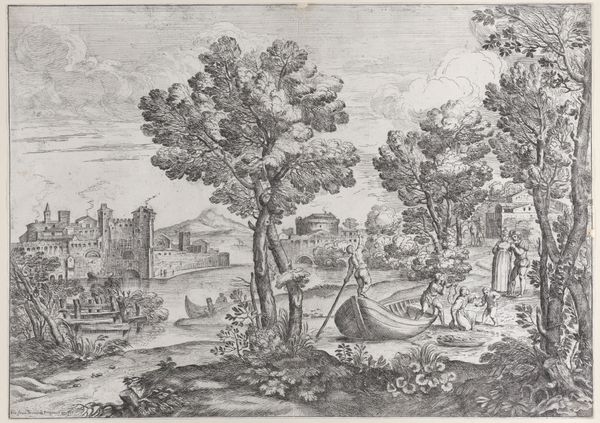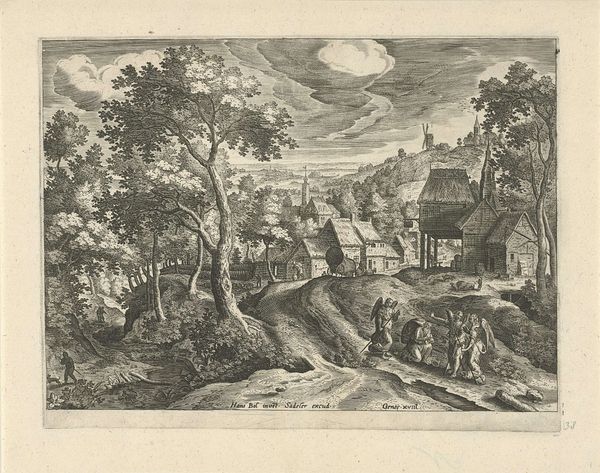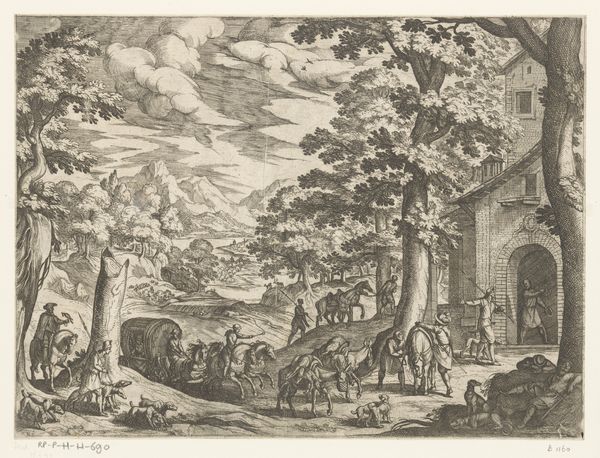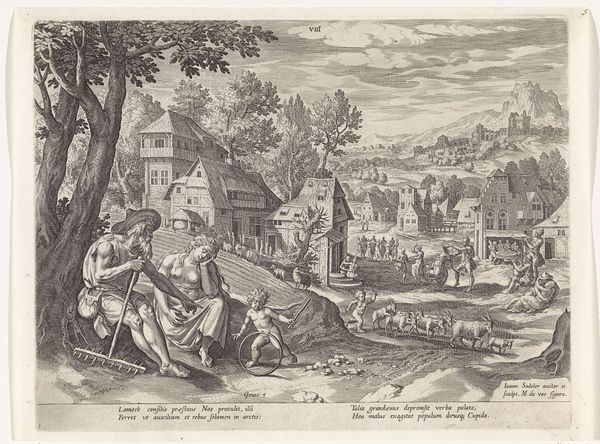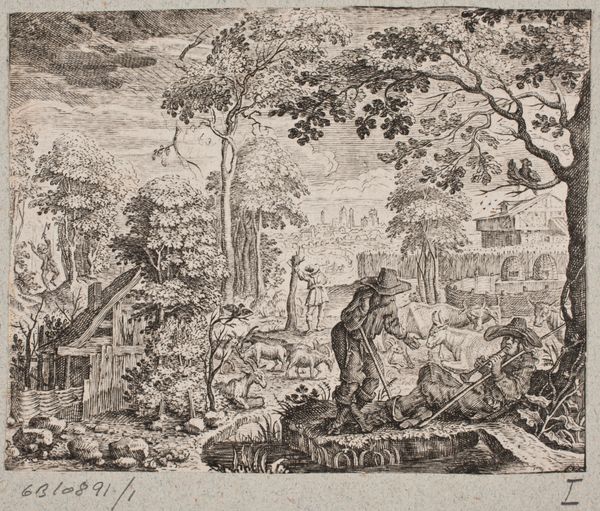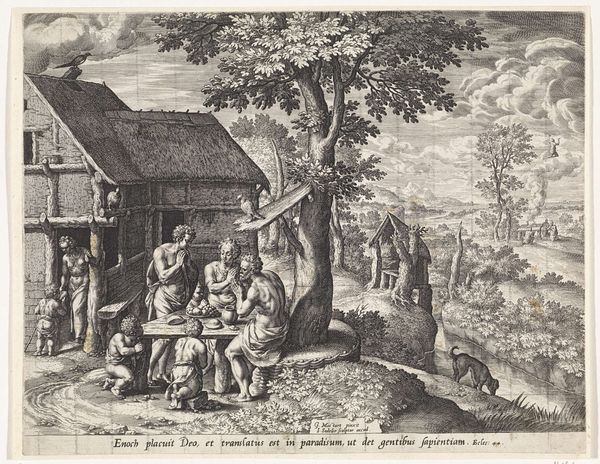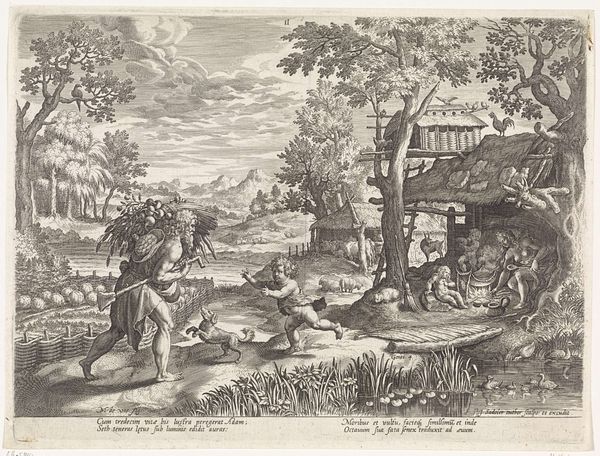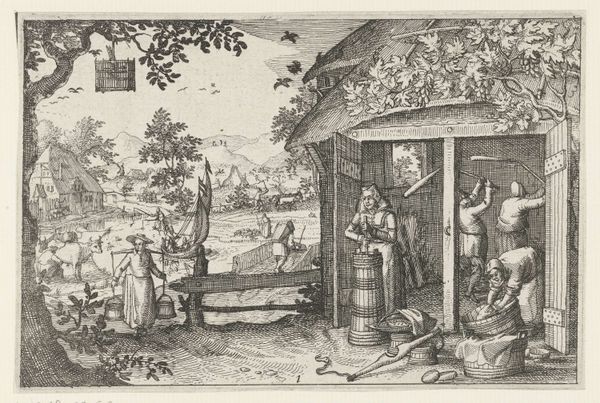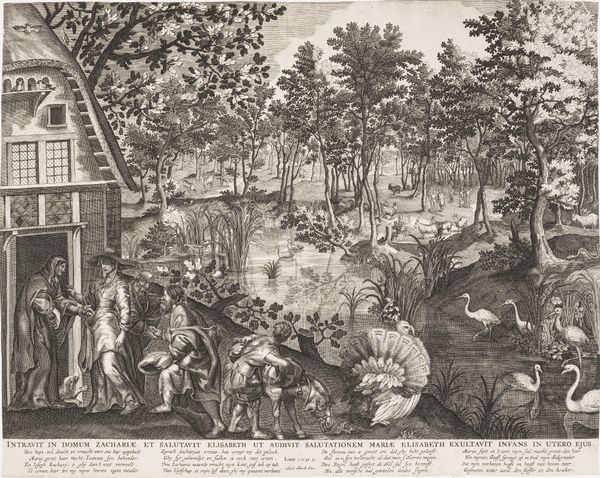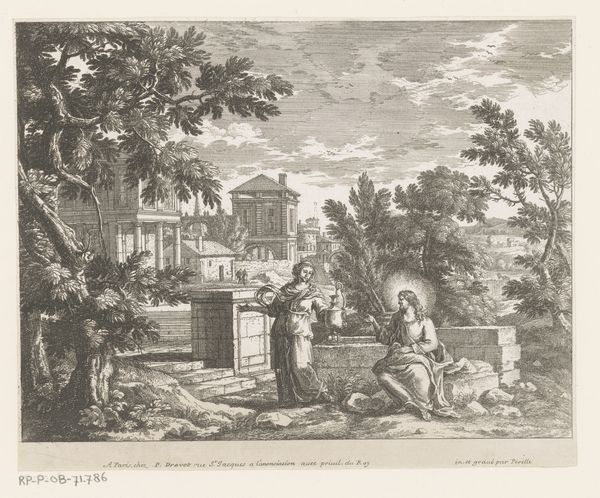
drawing, print, paper, ink, engraving
#
drawing
#
pen drawing
# print
#
landscape
#
mannerism
#
paper
#
ink
#
genre-painting
#
northern-renaissance
#
engraving
Dimensions: height 210 mm, width 289 mm
Copyright: Rijks Museum: Open Domain
Editor: This is “Maaltijd voor een huis,” or "Meal for a House," an engraving by Philips Galle from around 1575 to 1600. It's so detailed, almost like a snapshot of a bustling little world. The way the people are gathered around the table outdoors gives a sense of community, but also makes me wonder about what’s happening beyond this immediate scene. How do you interpret this work? Curator: The fascinating thing here is how genre painting—scenes of everyday life—gained traction during the Northern Renaissance and Mannerist periods. Look at how the artist embeds this meal scene within a broader social landscape. The inscription hints at deeper stories, perhaps familial conflicts or societal power dynamics, things affecting even simple outdoor meals. Consider also, for whom was this print intended? Editor: Presumably not the people in the scene! Was it meant for wealthier patrons? Curator: Exactly. Prints like these often circulated among the growing merchant class, reflecting their values and aspirations while also, potentially, serving as moral lessons. Galle worked in Antwerp, a major center for printmaking. Think about the political and religious tensions of that era; engravings were a powerful medium to disseminate ideas, subtly or not. Editor: So it's not just about the scene itself, but also who was looking at it and why? The setting too plays a role, almost idyllic, yet the tensions feel palpable. Curator: Precisely. And the printing process itself allowed for wider dissemination than painting ever could. The “original” becomes less important than the copies spreading ideas. It forces us to consider art's function not as solely aesthetic but social. What does it mean to depict ‘ordinary’ people and present it for a paying audience? Editor: I never considered the role of printing so politically, but it makes sense that making something available widely could create or solidify political views. I’ll never look at an engraving the same way! Curator: Hopefully now, it encourages a greater awareness of not only art *as* representation but how power, culture, and production are wrapped up within its circulation.
Comments
No comments
Be the first to comment and join the conversation on the ultimate creative platform.
